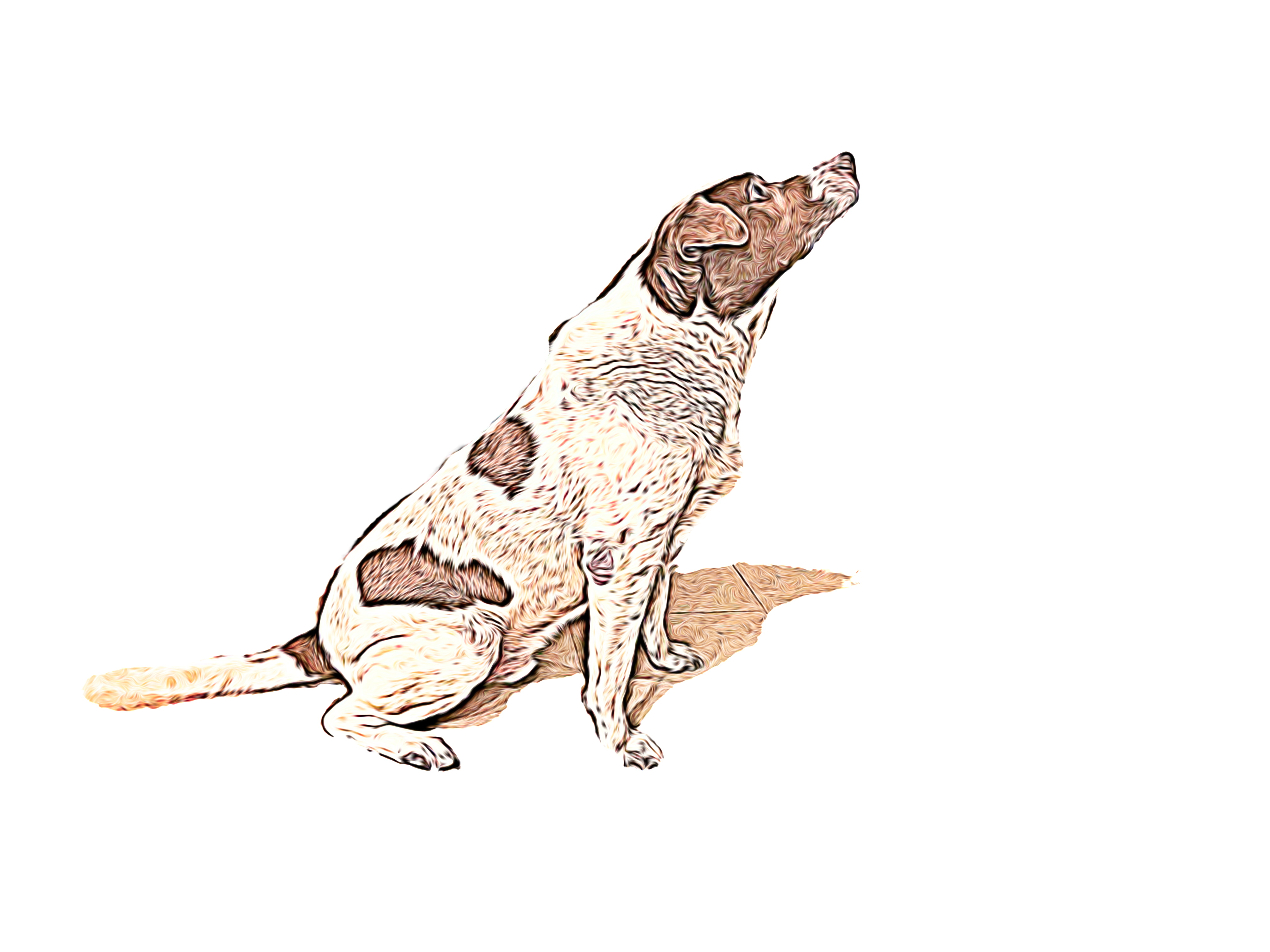Last updated on February 27th, 2022 at 09:06 pm
So continuing on from last night success I have some pretty crappy skies still so going to look at running the Star solver locally on my Mac and this was not the start I was hoping for.

So I updated the Ansible scripts to install astrometry-net
Astropy doesn’t look like it has a Home-brew script so I let kStars install that one automatically.
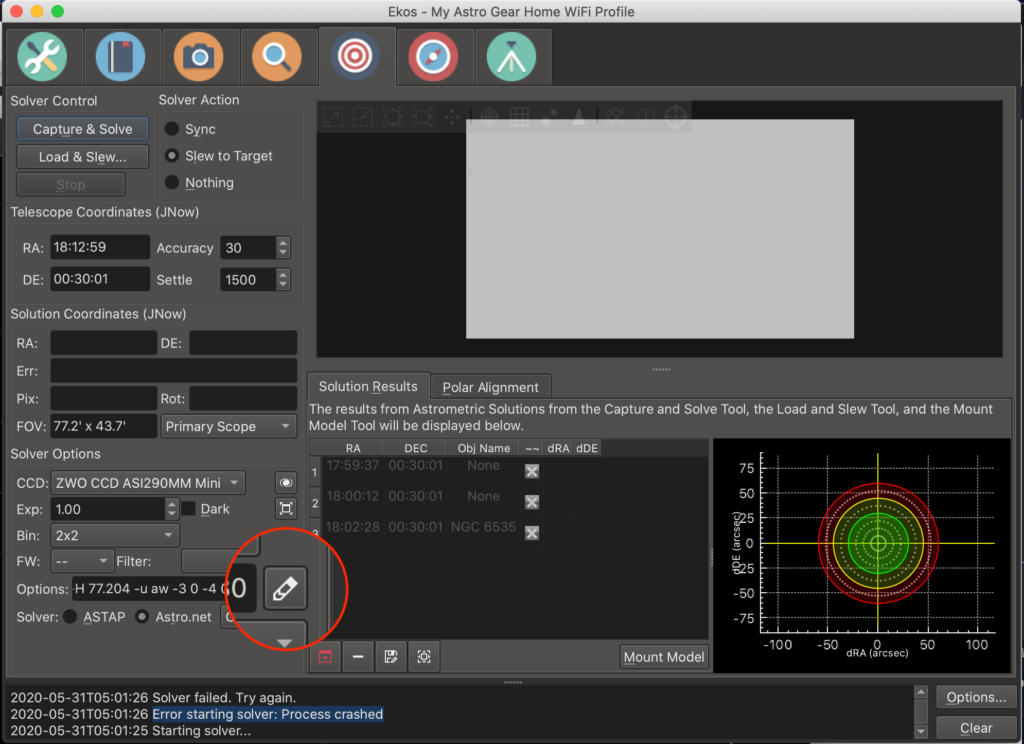
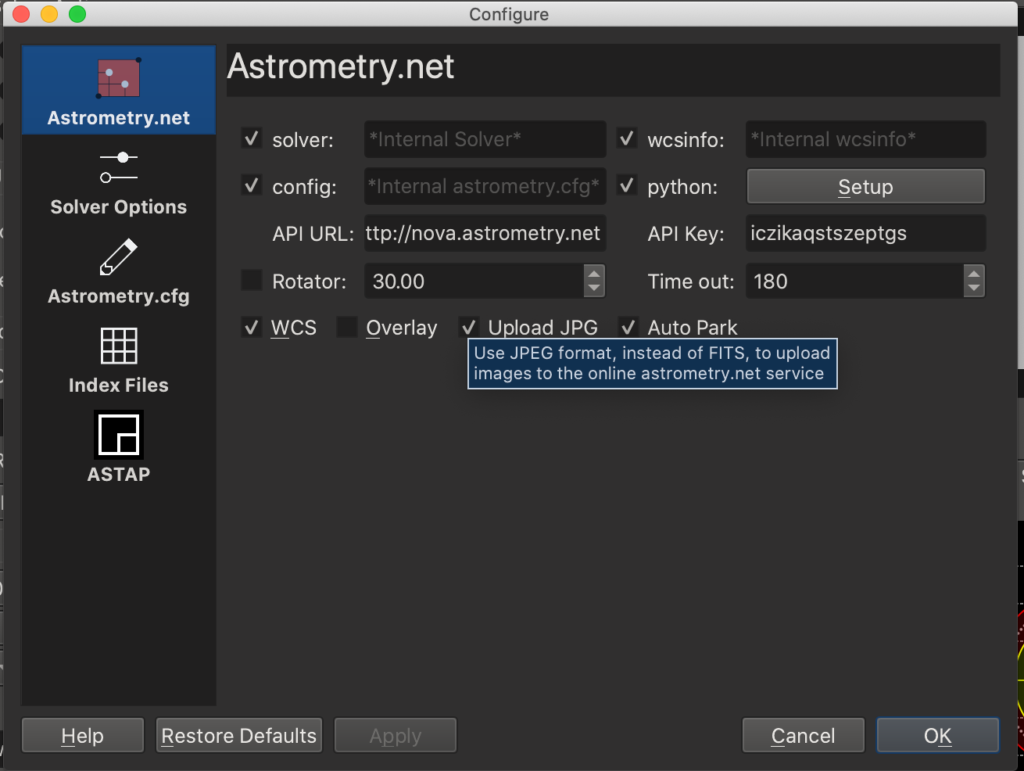
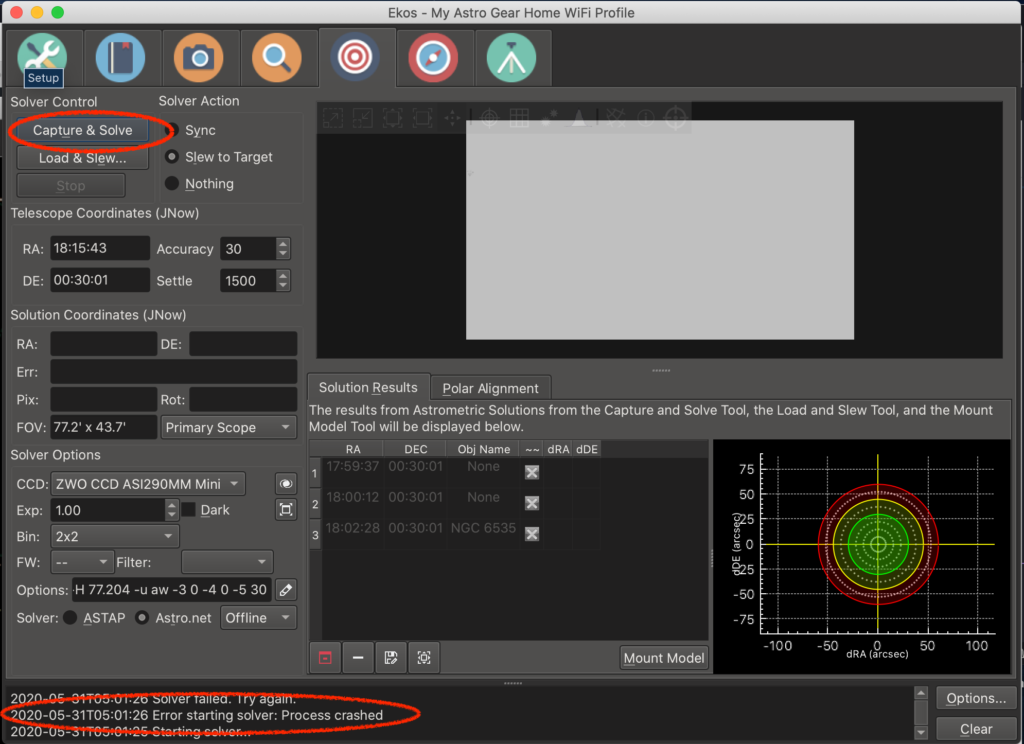

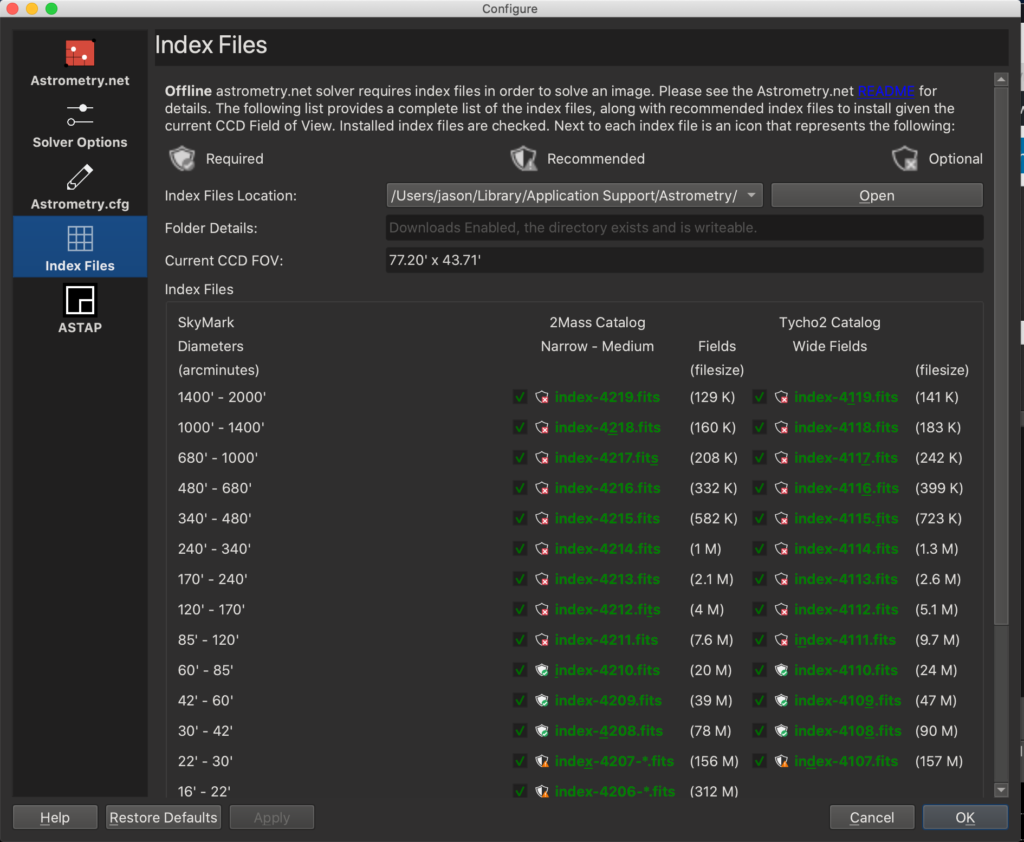
Solver still failed so we need to install some more missing libraries with pip and brew package managers.
sudo pip3 install pyfits
brew install netpbm
brew install bumpy
And we’re done with kStars on Mac
So it is about 4 in the morning and I cannot seem to find the magic sauce to make this work well in Mac. Every time I turn around I get another error with plate solving. I have most of the stuff working on the Mac however the plate solving seems to have a lot of external dependencies and python 2 vs python 3 might be causing some of that confusion. After a long night of trying I have decided to see if I can better optimize the VNC windows on the Astroberry and still run kStars on the Raspberry Pi. Everything just works under linux as far as plate solving and simulators which is nice to play around with during the daytime.
First step is to repeat the above setup on the Raspberry Pi to get the star index files all downloaded into the Pi SD Card. I have a 64GB card so the index cards will take up half the space on the drive. Testing of this however is significant in that a plate solve going out to astrometry.net took 112 seconds. By comparison local solving is done in 4 seconds.
The next step is to set the desktop size to match the MacBook so there are no scroll bars on the VNC window and when you maximize the display it appears like you are sitting at the terminal directly. To do this I ran the following:
sudo vi /boot/config.txt
There are a couple of lines that allow you to set the display resolution so I matched it to my MacBook at 1680×1050. This works significantly better and provides more real estate for kStars windows. I was having to navigate and move windows around constantly which was very annoying. The layout below should work much better and now more overlap between the skydive and control software.
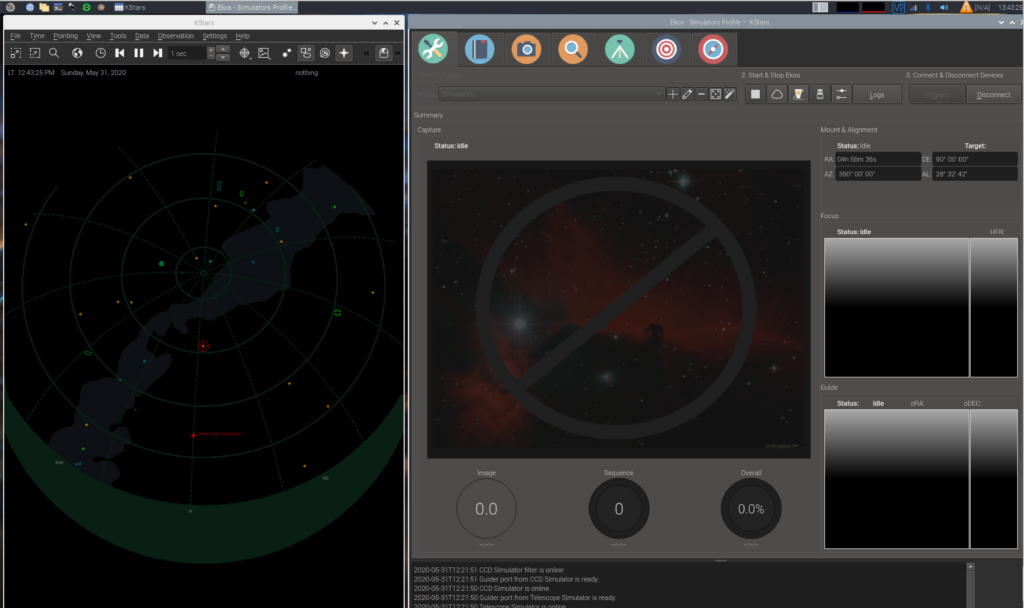
I have to figure out how to save the setting so that it opens like this every time.
The next thing I did was increase the GPU memory from 128GB to 512GB. Since this is a Raspberry Pi4 I have some extra memory that can be used for all the graphics kStars draws. This setting is also called out in the /boot/config.txt file.
One last thing I may try is to overclock but I am going to wait to see how the above settings work out and first.
